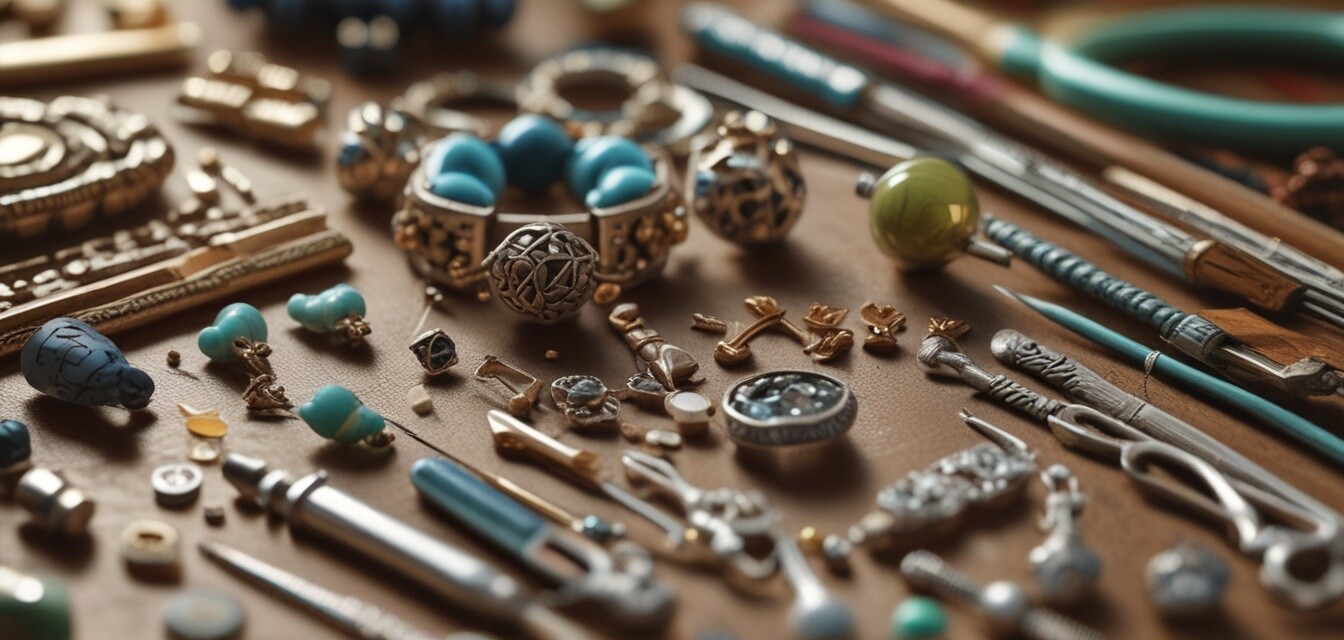
Jewelers' Secrets: Craftsmanship Techniques Unveiled
Key Takeaways
- Craftsmanship techniques are essential for creating high-quality jewelry.
- Tools and materials play a significant role in the final product.
- Expert insights provide valuable tips for aspiring jewelers.
The world of jewelry making is filled with secrets and craftsmanship techniques that are often passed down through generations of artisans. In this article, we delve into the techniques used by professional jewelers and explore valuable tips that can inspire aspiring designers. From selecting the right materials to mastering essential tools, uncovering these methods can elevate your jewelry-making journey.
The Importance of Craftsmanship in Jewelry Making
Jewelry craftsmanship is about the attention to detail and skill that goes into creating each piece. Here’s why craftsmanship matters:
- Quality: High-quality craftsmanship results in durable and stunning jewelry.
- Uniqueness: Skilled jewelers can create one-of-a-kind pieces that stand out.
- Value: Well-crafted jewelry holds its value over time, making it a worthy investment.
Essential Tools for Jewelers
Having the right tools is crucial for any jeweler. Below is a table of essential tools used in jewelry craftsmanship:
| Tool | Purpose |
|---|---|
| Saw | Used for cutting metal and shaping designs. |
| Pliers | Essential for bending and shaping wire. |
| Soldering Iron | Used for joining metal pieces together. |
| File | For smoothing rough edges and shaping metals. |
| Dapping Block | Creates curves and domes in metal sheets. |
Materials That Make the Difference
When selecting materials for jewelry making, quality is key. Here are some popular materials, along with their properties:
- Gold: Known for its luster and is a timeless choice for high-end jewelry.
- Silver: A versatile and affordable option, great for everyday pieces.
- Gemstones: Add color and character, each stone has unique meanings and properties.
Expert Insights on Craftsmanship Techniques
We gathered insights from professional jewelers who shared their craftsmanship secrets to help aspiring designers. Here are some key takeaways from these experts:
- Practice Makes Perfect: The more you work with your tools, the better you will become. Don't shy away from experimentation.
- Learn from Mistakes: Every jeweler has a story of a piece that went wrong. Use this as a learning opportunity to improve your skills.
- Stay Updated: Follow the latest trends in jewelry design by visiting trade shows and reading industry publications.
Turning Inspiration into Reality
Inspiration can come from various sources: nature, architecture, or even emotions. Here are tips for turning your inspiration into tangible designs:
Tips for Aspiring Jewelers
- Keep a sketchbook to jot down ideas as they come.
- Participate in workshops and classes to expand your skill set.
- Network with other jewelers to share ideas and techniques.
Caring for Your Tools and Materials
Maintaining your tools and materials is crucial for longevity and performance:
- Clean Regularly: Keeping your tools clean ensures better performance and longer life.
- Store Properly: Store materials in a cool, dry place to prevent damage.
Conclusion
The secrets of craftsmanship techniques in jewelry making are not solely in the tools or materials used but in the passion and care that artisans put into their work. Whether you are an aspiring jeweler or a jewelry enthusiast, understanding these principles can enrich your appreciation of fine jewelry. By learning from the experts and honing your skills, you can craft pieces that are not only beautiful but also meaningful.
Pros
- High-quality jewelry can be created with proper techniques.
- Unique designs can attract a discerning clientele.
- Craftsmanship knowledge is valuable and transferable.
Cons
- Requires significant practice and investment in tools.
- Can be time-consuming to master techniques.
- Market can be competitive for new jewelers.
For more insights into jewelry craftsmanship, explore our Buying Guides or dive deeper into News and Trends in the industry.